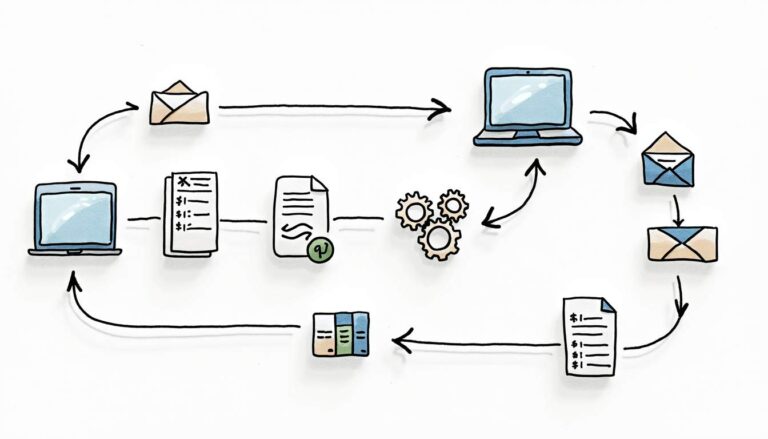In the world of procurement and supply chain management, two terms often arise: purchase orders (POs) and purchase requisitions (PRs). While they may seem similar at a glance, they serve distinct purposes within an organization’s purchasing process. Understanding these differences is crucial for businesses aiming to streamline their operations and enhance efficiency. This article delves into the key differences between purchase orders and purchase requisitions, as well as how they can work together to create a seamless procurement process.
What is a Purchase Requisition?
A purchase requisition is an internal document that an employee or department submits to request the purchase of goods or services. This document serves as a formal request for approval before a purchase is made. The requisition outlines the specifics of what is needed, including quantities, descriptions, and the intended use of the items.
Purpose of a Purchase Requisition
The primary purpose of a purchase requisition is to initiate the purchasing process within an organization. It acts as a communication tool between employees and the procurement department, ensuring that all purchases are justified and necessary. By requiring approval for purchases, organizations can maintain control over their spending and budget management. This process not only helps in tracking expenses but also aids in forecasting future needs and aligning procurement strategies with overall business objectives.
Key Components of a Purchase Requisition
Typically, a purchase requisition includes several key components:
- Requester Information: Details about the employee or department making the request.
- Item Description: A clear description of the goods or services needed.
- Quantity: The number of items required.
- Budget Code: The account or budget line against which the purchase will be charged.
- Justification: A brief explanation of why the purchase is necessary.
In addition to these components, some organizations may also include fields for vendor information, delivery timelines, and any special instructions related to the purchase. This additional detail can facilitate smoother transactions and ensure that the procurement team has all the necessary information to make informed decisions.
Approval Workflow
Once a purchase requisition is submitted, it typically goes through an approval workflow. This may involve one or more levels of management, depending on the organization’s policies. The approval process ensures that all purchases align with the company’s budget and strategic goals. Only after receiving the necessary approvals can the procurement team proceed to create a purchase order. This multi-tiered approval system not only helps in mitigating risks associated with unauthorized spending but also fosters accountability among departments, as each request must be justified and validated by higher management.
Furthermore, many organizations are now leveraging technology to streamline the approval workflow. Automated systems can route requisitions to the appropriate approvers based on predefined criteria, such as the amount or type of purchase. This not only speeds up the process but also provides a clear audit trail, making it easier to track approvals and maintain compliance with internal policies and external regulations.
What is a Purchase Order?
A purchase order is a formal document issued by a buyer to a seller, indicating the details of the products or services being ordered. It serves as a legally binding agreement once accepted by the supplier. Purchase orders are essential for tracking purchases and managing inventory, as they provide a clear record of what has been ordered and the agreed-upon terms. This structured approach not only streamlines the procurement process but also enhances communication between buyers and sellers, ensuring that both parties are on the same page throughout the transaction.

Purpose of a Purchase Order
The main purpose of a purchase order is to confirm a purchase agreement between the buyer and the seller. It provides clarity on the specifics of the transaction, including pricing, delivery dates, and payment terms. This clarity helps prevent misunderstandings and disputes between the parties involved. Additionally, purchase orders facilitate better budgeting and forecasting for businesses, as they allow companies to track their spending and manage their cash flow more effectively. By having a documented agreement, businesses can also analyze their purchasing patterns over time, leading to more informed decision-making in future transactions.
Key Components of a Purchase Order
A purchase order typically includes several important components:
- Vendor Information: Details about the supplier, including name, address, and contact information.
- Order Number: A unique identifier for tracking the order.
- Item Description: A detailed description of the goods or services being ordered.
- Quantity and Price: The number of items and the agreed-upon price per item.
- Delivery Terms: Information regarding shipping and delivery expectations.
In addition to these core components, purchase orders may also include terms related to warranties, return policies, and special instructions for handling or packaging. These additional details can be crucial for ensuring that the buyer receives exactly what they need, in the right condition, and within the expected timeframe. Furthermore, including such specifics can help mitigate potential issues that may arise during the fulfillment process, thereby enhancing the overall efficiency of the transaction.
Legal Implications
Once a purchase order is accepted by the supplier, it becomes a legally binding contract. This means that both parties are obligated to fulfill the terms outlined in the document. For the buyer, this provides assurance that the goods or services will be delivered as specified, while for the seller, it guarantees payment for the items provided. The legal nature of purchase orders also means that they can be used as evidence in disputes, making it essential for both parties to maintain accurate records of all communications and transactions related to the order. Additionally, understanding the legal implications of purchase orders can help businesses navigate complex commercial relationships and ensure compliance with relevant regulations and standards.
Key Differences Between Purchase Orders and Purchase Requisitions
While purchase orders and purchase requisitions are both integral to the procurement process, they serve different functions and are used at different stages. Understanding these differences can help organizations optimize their purchasing workflows.
Function and Purpose
The primary function of a purchase requisition is to request approval for a purchase, while a purchase order serves as a formal agreement to buy goods or services. The requisition is an internal document, whereas the purchase order is external, sent to a supplier. This distinction is crucial for maintaining organized procurement processes.
Who Uses Them?
Purchase requisitions are typically used by employees or departments within an organization to initiate the purchasing process. In contrast, purchase orders are created by the procurement or purchasing department after a requisition has been approved. This division of responsibilities helps ensure that purchases are made in accordance with company policies.
Approval Process
Purchase requisitions require an approval process before a purchase order can be generated. This ensures that all purchases are necessary and budgeted for. On the other hand, purchase orders do not require internal approval once they are issued; however, they must be accepted by the supplier to be valid. This difference highlights the importance of internal controls in managing organizational spending.
The Synergy Between Purchase Orders and Purchase Requisitions
While purchase orders and purchase requisitions serve distinct purposes, they are interconnected and work together to create an efficient procurement process. Understanding their synergy can help organizations streamline operations and improve overall purchasing efficiency.

Streamlining the Procurement Process
The integration of purchase requisitions and purchase orders can significantly streamline the procurement process. By using requisitions to gather necessary approvals before generating purchase orders, organizations can reduce the risk of unauthorized spending. This structured approach ensures that all purchases are aligned with company goals and budgets.
Enhancing Accountability and Transparency
Using both purchase requisitions and purchase orders enhances accountability within the procurement process. Employees must justify their requests through requisitions, while purchase orders provide a clear record of transactions with suppliers. This transparency helps organizations track spending and monitor compliance with procurement policies.
Improving Supplier Relationships
Clear communication between the purchasing department and suppliers is essential for maintaining strong supplier relationships. By issuing purchase orders based on approved requisitions, organizations can provide suppliers with accurate and detailed information about their orders. This clarity helps reduce misunderstandings and fosters trust between buyers and sellers.
Best Practices for Managing Purchase Orders and Purchase Requisitions
To maximize the benefits of purchase orders and purchase requisitions, organizations should implement best practices that promote efficiency and control. Here are some key strategies to consider:
Automate the Process
Implementing an automated procurement system can significantly enhance the efficiency of managing purchase orders and requisitions. Automation reduces manual errors, speeds up the approval process, and provides real-time visibility into purchasing activities. By utilizing technology, organizations can streamline workflows and free up valuable time for procurement teams.
Establish Clear Policies and Procedures
Organizations should develop clear policies and procedures for submitting purchase requisitions and generating purchase orders. This includes defining approval workflows, setting spending limits, and outlining documentation requirements. Clear guidelines help ensure that all employees understand the process and adhere to company policies.
Regular Training and Communication
Regular training sessions for employees involved in the procurement process can help reinforce best practices and keep everyone informed about any changes to policies or procedures. Additionally, fostering open communication between departments can enhance collaboration and ensure that everyone is on the same page regarding purchasing needs.
Conclusion
Understanding the differences between purchase orders and purchase requisitions is essential for organizations looking to optimize their procurement processes. While purchase requisitions serve as internal requests for approval, purchase orders act as formal agreements with suppliers. By leveraging the synergy between these two documents, organizations can streamline their purchasing workflows, enhance accountability, and improve supplier relationships.
Implementing best practices, such as automation and clear communication, can further enhance the efficiency of the procurement process. By recognizing the unique roles of purchase orders and purchase requisitions, organizations can create a more organized and effective purchasing system that supports their overall business objectives.
Take Your Procurement Process to the Next Level with Bellwether
Ready to transform your organization’s procurement and inventory management? Bellwether’s comprehensive solution is tailored to streamline your purchasing workflow, from requisitions to purchase orders. Experience the power of automation, enhanced control, and strategic spend analysis to drive your business forward. Don’t miss the opportunity to elevate your procurement strategy and achieve operational excellence. Book a Demo today and discover how we can help you optimize your processes for better efficiency and cost savings.







